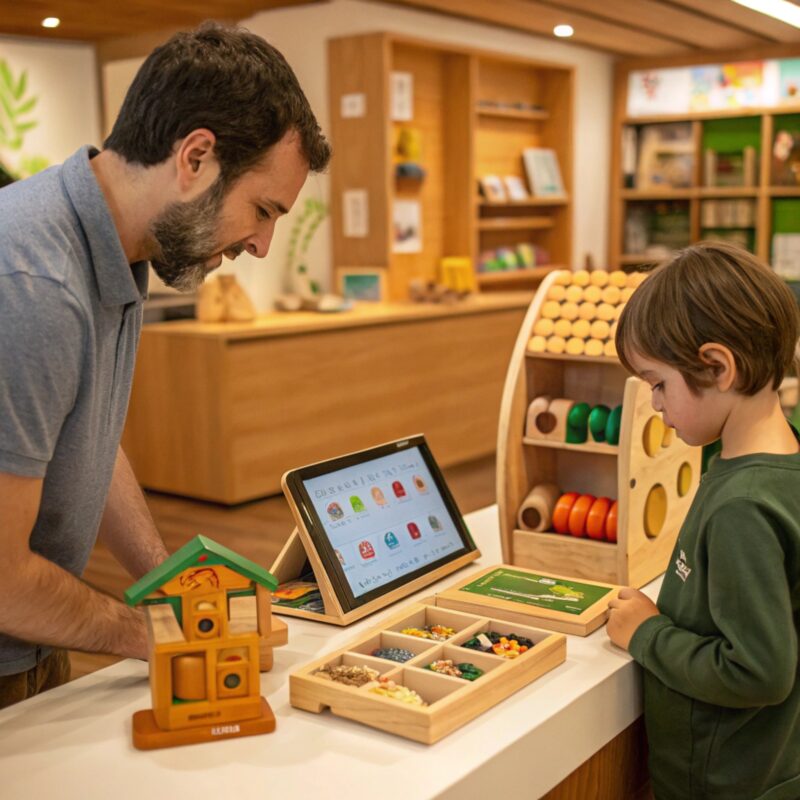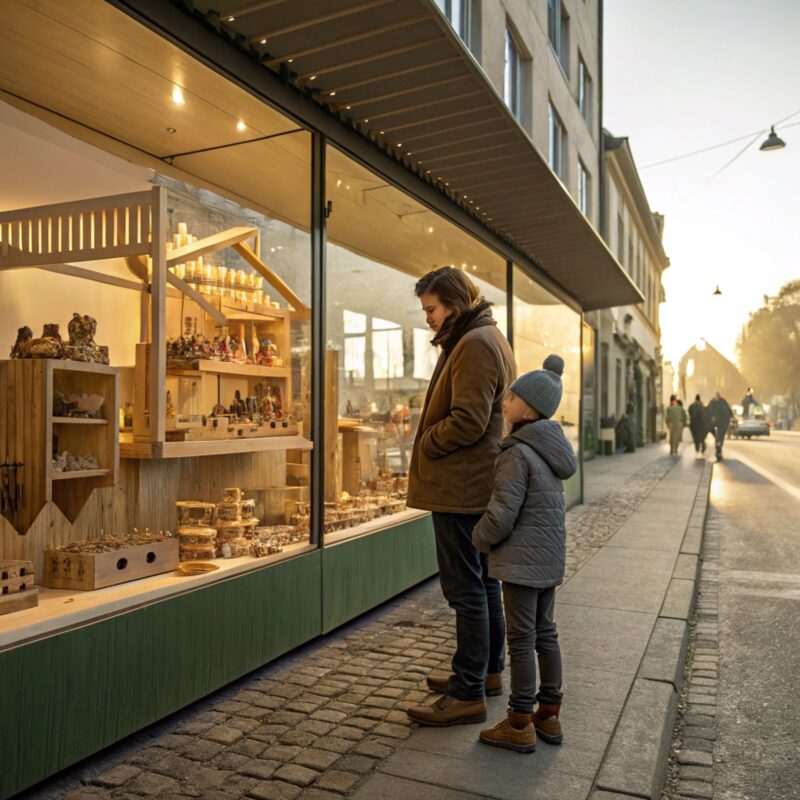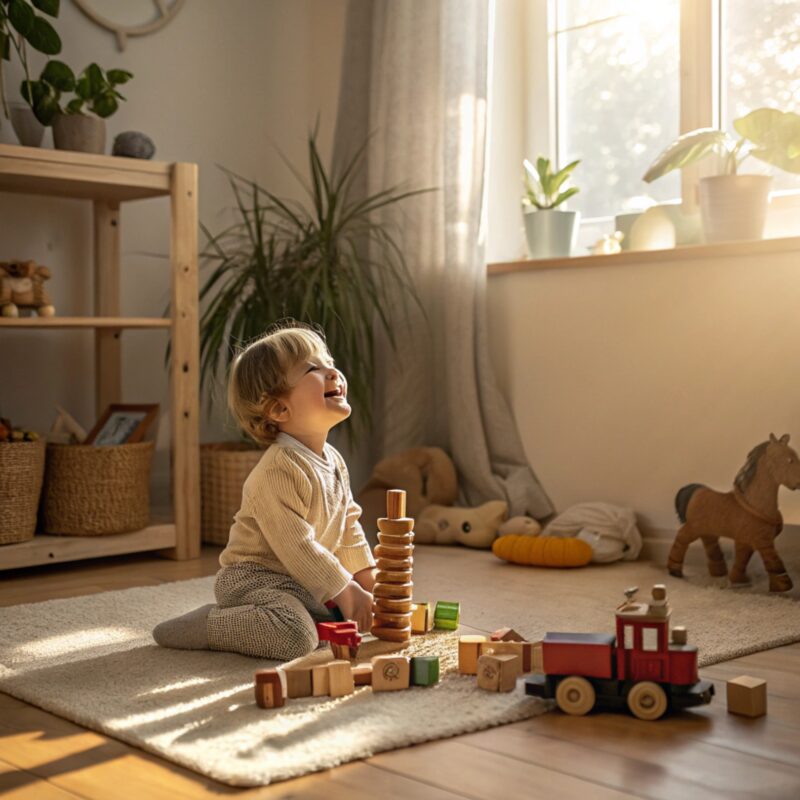Creativity and DIY, Gifts and Celebrations, Home Comfort and Decor
Why Choose Wooden Toys for Kids?
Why Choose Wooden Toys for Kids?
As parents, caregivers, and educators, we often find ourselves asking: what types of toys best support a child’s growth, learning, and happiness? In a market overflowing with electronic gadgets, flashy plastic playthings, and digital distractions, the timeless simplicity of wooden toys stands out. Wooden toys are more than nostalgic remnants of a bygone era—they are consistently gaining renewed importance today for their durability, sustainability, and the rich sensory experience they provide. By choosing wooden toys for kids, you not only give children a high-quality play experience but also create an environment that fosters creativity, enhances child development, and aligns beautifully with eco-conscious values.
In this extensive guide, we will explore why wooden toys have remained a beloved choice across generations. We’ll trace their historical journey, examine what makes them special in modern contexts, and delve deeply into their benefits for cognitive growth, social interaction, and environmental responsibility. We will also address challenges, emerging trends, and speculate on the future developments in this space. By the end, you’ll see how these humble objects can contribute to raising well-rounded, imaginative, and resourceful individuals.
Historical Context
Wooden toys have a storied legacy, dating back thousands of years. In ancient Egypt, Greece, and Rome, children played with carved wooden animals and figurines, while in many traditional cultures, handcrafted wooden dolls and spinning tops were passed down through generations. Such simple objects carried immense cultural and familial significance, bridging generational gaps as they were inherited, cherished, and preserved.
In the last century, even as industrialization brought mass-produced plastic playthings into households, wooden toys remained steadfast. They became closely associated with artisanal craftsmanship and educational philosophies such as Montessori and Waldorf education, which emphasize hands-on learning and connection to natural materials. Throughout history, wooden toys symbolized stability, heritage, and a return to nature’s gentle touch in an increasingly mechanized world. Now, in an era concerned with environmental stewardship and quality over quantity, wooden toys resonate with modern parents looking for authenticity and lasting value.
The Core Benefits of Wooden Toys
1. Durability and Longevity
One of the most immediately noticeable advantages of wooden toys is their incredible durability. Unlike many plastic toys that break easily or degrade over time, well-crafted wooden toys can withstand years—if not decades—of consistent play. This durability means that the toy can be handed down among siblings or even passed to future generations. In an age where products come and go at a blistering pace, wooden toys stand as a beacon of lasting value.
For instance, consider a set of wooden building blocks. The corners may get smoother over time, but the overall integrity and functionality remain intact for decades. This contrasts sharply with plastic toys that crack, fade, or malfunction. Buying wooden toys is an investment that pays dividends, as they endure long after their cheaper counterparts are discarded.
2. Encouraging Imagination and Creative Thinking
Children flourish when given the chance to explore open-ended play, where simple objects become whatever their minds conjure. Wooden toys, with their understated designs and lack of electronic gimmicks, provide a blank canvas upon which young imaginations can paint limitless scenarios. A simple wooden doll can become a friendly neighbor, a heroic adventurer, or a character in a grand fantasy epic. A set of wooden vehicles can spark a bustling miniature city, and wooden animal figurines can bring a safari, a farm, or a magical forest into your living room.
Real-life examples are abundant: a child playing with wooden kitchen utensils will “cook” invisible meals, serve pretend tea, and host imaginary dinner parties. These activities are crucial for developing problem-solving skills, narrative-building abilities, and social empathy. By choosing wooden toys, you’re not just providing entertainment, you’re supplying the tools for rich storytelling and intellectual growth.
3. Supporting Child Development and Skill Building
Wooden toys are also invaluable for fostering a wide range of developmental skills. For younger children, grabbing, stacking, and balancing wooden blocks improves hand-eye coordination, fine motor skills, and spatial awareness. For older children, constructing intricate structures can promote logical thinking, planning, and patience.
Take the classic shape sorter toy as an example. A wooden shape sorter provides a tactile way to understand geometric forms, enhance problem-solving, and build persistence. Unlike plastic or digital equivalents that may have lights or sounds, the wooden version places the child in control, encouraging them to rely on their own faculties to succeed. This approach resonates with educational methodologies that stress hands-on interaction and sensory engagement as powerful catalysts for cognitive growth.
4. Safety and Health Considerations
Wooden toys typically come with fewer toxic chemicals and additives than many plastics or electronics. High-quality wooden toys are often finished with non-toxic, child-safe paints or natural oils. This makes them safer for toddlers who frequently put toys in their mouths. Moreover, wooden toys are less likely to have small, easily detachable parts that pose choking hazards.
For parents who prioritize health and well-being, choosing wooden toys aligns with holistic child-rearing philosophies. It’s about creating a play environment free from unnecessary chemicals, loud noises, or overstimulation. Instead, the focus is on authentic, meaningful experiences that let kids engage with the world naturally and safely.
5. Eco-Friendliness and Sustainability
In today’s eco-conscious world, sustainability is paramount. Wooden toys, made from renewable timber sources, have a significantly lower environmental impact than their plastic counterparts, which rely on fossil fuels and often end up in landfills. Many manufacturers adhere to responsible forestry practices, ensuring the wood is sourced ethically and replenished over time.
By selecting wooden toys, you make a statement about your commitment to environmental stewardship. You not only teach children about the importance of caring for the planet but also support industries and artisans dedicated to green practices. Over time, this focus on sustainability instills values that children carry into adulthood.
Challenges and Opportunities
While wooden toys are celebrated for their merits, they do present certain challenges. High-quality wooden toys can be more expensive than their mass-produced plastic equivalents, making them less accessible for families on tighter budgets. Additionally, the range of themes and characters available in wooden form may be more limited compared to the sheer variety found in plastic or electronic toys.
However, these challenges present opportunities for innovation and growth. As demand for sustainable products rises, economies of scale will help lower costs. Boutique artisans and larger manufacturers alike are exploring new, affordable ways to produce wooden toys. Innovations in design are leading to a wider array of options, including complex wooden puzzles, interactive wooden STEM kits, and even modular wooden robots.


Moreover, crowdfunding platforms and online marketplaces empower small-scale craftspeople to reach global audiences. Parents can now source uniquely designed wooden toys with multicultural themes, inclusive characters, or specialized educational purposes. This broader access fosters a richer ecosystem of wooden toy offerings, catering to different developmental stages, interests, and cultural backgrounds.
Future Developments and Trends
The future of wooden toys looks bright, buoyed by increasing consumer awareness and a desire to break free from disposable, short-lived products. As technology advances, we may see intriguing hybrids: wooden toys enhanced by simple electronics, sensors, or augmented reality features that still honor the core principles of simplicity and tactile engagement. Imagine a wooden puzzle that, when completed, connects to a tablet application providing fun facts about the shapes or animals displayed. Such subtle integrations can enrich the educational value without overshadowing the wooden toy’s fundamental attributes.
Collaboration between educational experts, designers, and environmentally conscious firms will likely yield wooden toys that cater to the specific developmental needs of children with diverse learning styles. More research-backed designs will emerge, ensuring that each curve, texture, and component is optimized for learning and growth. In addition, customizable wooden toys—where parents or children can add their personal touch—will likely become more common, further increasing the sense of ownership, care, and creativity children experience with their toys.
As the global community becomes more culturally interconnected, expect to see more wooden toys reflecting traditions and stories from around the world. These toys can serve as gentle tools for teaching cultural awareness and diversity, fostering empathy and global thinking from an early age. The future thus holds a dynamic interplay between tradition and innovation, ensuring that wooden toys remain a beloved choice for generations to come.
Conclusion
Choosing wooden toys for kids is about so much more than nostalgia or style. It represents a holistic, future-facing approach to childhood play, one that nurtures imagination, supports healthy development, and respects our planet. Historically rooted and contemporarily relevant, wooden toys bridge the past and future, uniting traditions of craftsmanship with evolving educational theories and sustainable practices.
As you fill a child’s environment with these natural, durable objects, you’re offering them a valuable gift: the chance to shape their own play narratives, develop critical cognitive and social skills, and learn the importance of caring for the Earth. In a world of fleeting trends and disposable goods, wooden toys stand out as trustworthy, enriching companions. By embracing these timeless playthings, you help guide children toward a more mindful, creative, and responsible future.

